A robust brand is not just a superficial facade; it’s a crucial asset that will affect your bottom line. If you’re still on the fence about whether to invest in branding your business or not, you’re in the right place.
This article will highlight the undeniable importance of branding and give you actionable insights on how you can implement conversion-focused branding.
But first, let’s briefly cover what branding is.
What Is Branding?
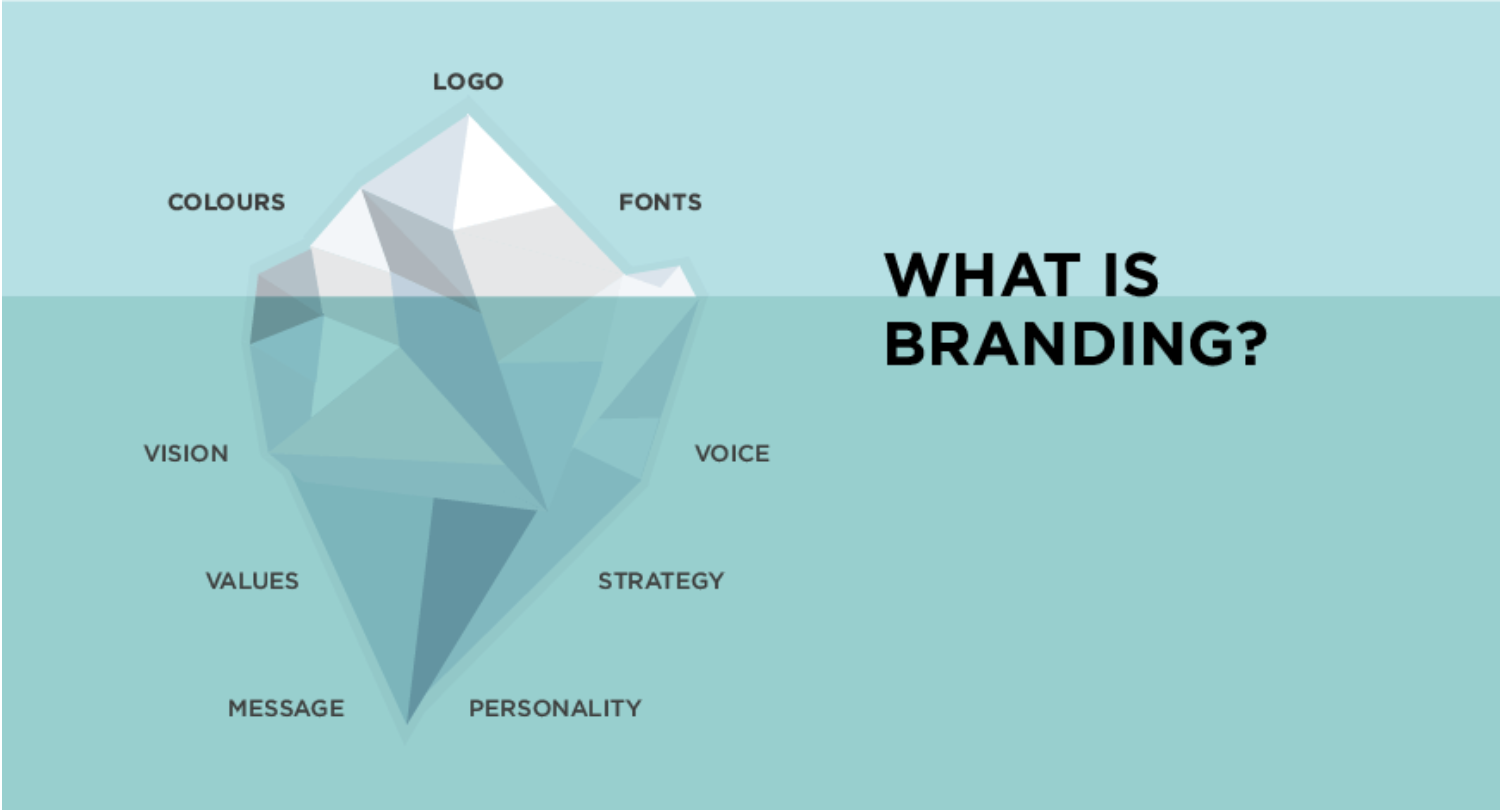
Branding is creating a unique image and identity for your business or product in the customers’ minds. It includes designing a distinct name, logo, and symbol, as well as developing a consistent theme across all marketing communications.
Good branding sets a business apart from its competitors, making it easily recognizable to the target customer. It’s like creating a personality for the business that people can relate to. But branding isn’t just about looking good on the outside; it also involves communicating the values and qualities that a business stands for. Over time, consistent branding builds trust and loyalty among customers.
Branding Your Business: 10 Reasons It’s Your Competitive Edge in 2024
In this section we’ll introduce a key aspect of branding, why you should consider it, and how you can implement branding strategies to take advantage of this aspect.
1. Understanding Consumer Expectations
Understanding consumer expectations aligns your brand’s message and offers with what your customers need and want. As the market evolves, so do consumers’ preferences and demands. Effective branding requires a keen understanding of these expectations to make sure your business stays relevant and appealing.
The article highlights the importance of understanding consumer expectations, which is key to building a strong brand. In global markets, this becomes even more crucial. Research shows that 75% of consumers are more likely to purchase from a brand that communicates in their native language, emphasizing how relevant messaging drives engagement. Through our expert localization services by Milengo, we’ve observed that adapting content to local languages and cultural values can increase brand trust by as much as 30%, making it a vital step for businesses aiming to strengthen their global presence.
Start by conducting thorough market research to identify your target audience’s current preferences and potential future trends. Use surveys and social media analytics to gather valuable insights.
Next, tailor your branding strategies to reflect these expectations. For instance, if consumers are leaning towards eco-friendly products, highlight your business’s sustainable practices in your branding message.
Make sure your branding resonates with your audience’s values. This could be through storytelling, visual content, or interactive campaigns that engage your audience and reflect their expectations.
Here’s one great example:
Digestive Warrior, a digestive supplement brand uses storytelling to strike a cord with their audience. Karen Mullins, the brand owner, shares her personal story of how much she suffered and lost because of her digestive condition. By including this narrative, she made her brand relevant to the right audience.
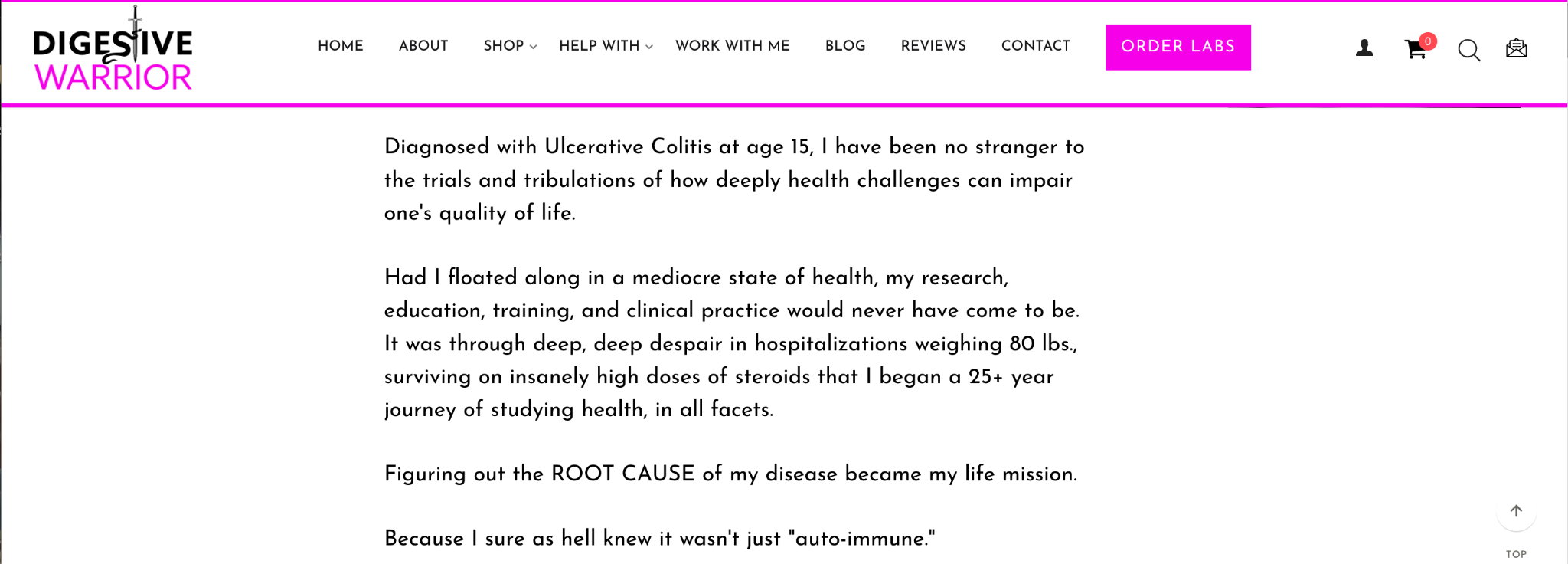
2. Leveraging Technology For Branding
This opens doors to innovative ways of connecting with and impressing your audience. With the continuous advancement in technology, utilizing digital tools will enhance your brand’s visibility and engagement.
Start by conducting a technology audit where you identify technologies that align with your brand’s goals. Identify gaps and opportunities, then create a phased plan to integrate relevant technologies. For instance, augmented reality (AR) and virtual reality (VR) can provide immersive brand experiences, while artificial intelligence (AI) can personalize customer interactions.
Implement these technologies in your branding strategies to create interactive and memorable customer experiences. For example, use AR to let customers virtually try on products or use AI for personalized recommendations based on browsing history.
Make sure your website and social media platforms are optimized for mobile and voice search to cater to the increasing use of smartphones and smart speakers.
Start with one technology that aligns well with your brand, measure its impact, and gradually expand to incorporate others to continually enhance and modernize your brand’s appeal.
3. Adapting To Evolving Branding Trends
In 2024, trends like minimalistic design elements, voice and sonic branding, or eco-conscious branding will dominate the market. Staying updated with these trends and incorporating relevant ones into your branding strategy will set you apart from competitors and resonate well with modern consumers.
When conducting research, identify the prevailing branding trends in your industry. Subscribe to reputable marketing and branding blogs and follow thought leaders in the branding domain to stay informed.
Next, evaluate which trends align with your brand’s values and audience preferences. For instance, if minimalistic design is trending and resonates with your audience, consider revamping your visual branding elements accordingly.
Implement the chosen trends in all visual elements like logos, packaging, online platforms, and marketing campaigns. Make sure it’s applied consistently across all customer touchpoints.
Set up a quarterly review process to evaluate how effective these trends are for your brand. Track customer engagement, website traffic, and sales conversions to measure impact. This regular review helps identify when it’s time to adapt to new trends, keeping your brand fresh and engaging in the fast-evolving market of 2024.
4. Establishing Brand Consistency & Identity
Having a clear and consistent brand identity helps to cut through the noise and foster a loyal customer base. A well-defined and strong brand identity, consistently portrayed, ensures that your business delivers a coherent message, reinforcing the brand’s values and promises to the audience.
Develop a comprehensive brand guideline that covers everything from logo usage (including the logo maker you use), typography, color palettes, and other visual assets to the tone of voice and messaging. Make sure every piece of content, be it on your website, social media, or offline company materials, adheres to this style guide.
Here’s an excellent example from Pumpkin Care, a cat insurance service. You’ll see the playful vibe consistently within their website and social media posts. They even created Instagram Stories thumbnails with an art style consistent to what you’ll see on the website.
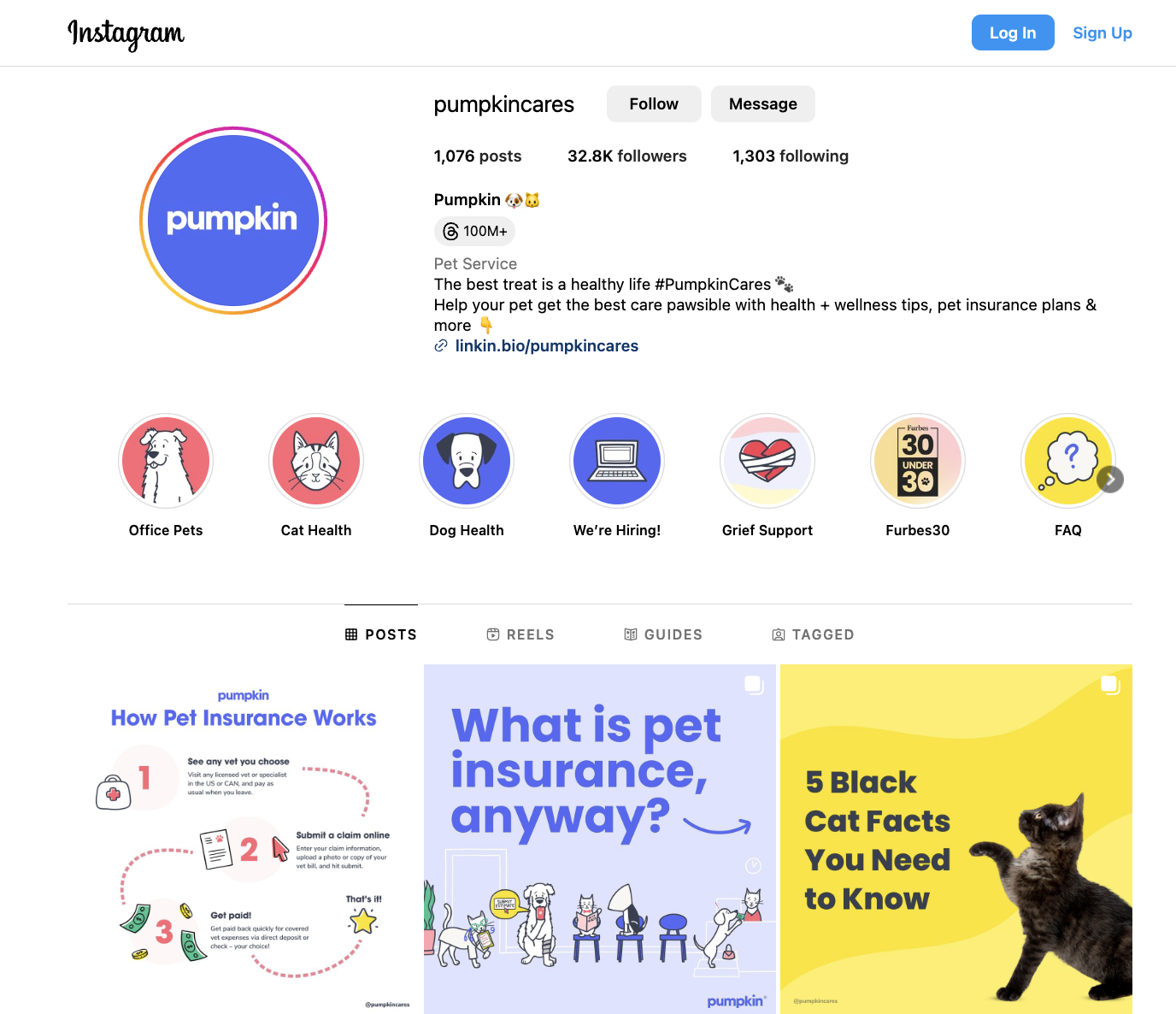
Train your team to understand and implement these guidelines in every interaction they have with customers.
Implement feedback loops to gauge how effective your brand identity and consistency is. Monitor brand mentions online and analyze customer interactions with your brand across various touchpoints to ensure the intended brand message is being accurately perceived.
Conduct a brand audit as well. Identify any discrepancies and devise a corrective plan to align all branding elements. A regular brand audit, say bi-annually or annually, will ensure that your brand identity remains consistent and continues to resonate with your ideal customer.
5. Enhancing Digital Presence
A strong digital presence reflects a well-established brand, making it easier for customers to find, interact with, and trust your business. Having a cohesive and engaging digital brand presence is non-negotiable for business growth and customer retention.
Implement a content calendar to plan and schedule your posts, blogs, and promotional campaigns across all digital platforms. Additionally, analyze the performance of your digital content strategy regularly to understand what resonates with your audience, and adjust your strategy accordingly.
Make sure your website is user-friendly, mobile-optimized, and reflective of your brand’s visual identity. Utilize SEO (Search Engine Optimization) strategies to improve your brand’s visibility on search engines, making it easier for potential customers to find you.
Engage in consistent and meaningful interactions with your audience. Respond to reviews, comments, and messages in a brand-consistent manner to build a positive digital reputation.
And if you want to foster deeper engagement, why not consider using a video-centric community platform like Swarm? Doing so lets you run live discussions, interactive Q&A sessions, and real-time video interactions, making your brand feel more personal and connected.
6. Differentiating In A Competitive Market
As markets saturate, having a unique brand identity is what captures attention and retains customer loyalty. A well-defined brand showcases your business’s unique values and offers, making it easier for customers to choose you over others.
First off, make sure there’s an exclusive product element you can offer. This is your biggest asset.
Identify your unique selling propositions (USPs). It could be superior quality, customer service, innovation, or ethical practices. Embed these USPs into your branding strategy. Make sure that your logo, taglines, and marketing campaigns clearly reflect what makes you different and why customers should choose you.
Here’s a great example.
Shop Solar brands itself as a transparent and affordable solar power system provider. In their About Us section, they’ll explain why they can offer the lowest prices without compromising quality. They differentiate themselves from traditional providers and outline the costs clients no longer have to pay they would otherwise have to when relying on traditional services.
Maintain consistent communication of your USPs across all marketing channels, be it your website, social media, or offline marketing materials. Highlight customer testimonials and case studies that validate your USPs to fortify your brand’s unique position in the market.
Take a step further by developing a competitive analysis framework to regularly evaluate how your branding differentiates you. Assess your competitors’ branding strategies, identify gaps, and refine your branding to continually highlight your unique offers.
7. Building Trust & Credibility
This forms the backbone of a loyal customer base. In a world where consumers are bombarded with endless choices, trust is a decisive factor in their choice. A credible brand not only attracts customers but also retains them, fostering a community of loyal patrons who advocate for your brand.
Build trust and credibility by ensuring transparency in your operations and communications. Clearly articulate your business values, practices, and policies on your website and other platforms. Make sure that engaging in ethical business practices is evident.
Collect and showcase customer testimonials, reviews, and case studies to provide social proof of your brand’s credibility. This is especially helpful for emerging brands like Whop, a relatively new player in the digital marketplace scene.
Since money is highly involved users would obviously want to make sure they’re engaging in a legitimate business so they liberally take advantage of reviews throughout the website. They’ll also share cases on how you can sell online.
Handle customer complaints and negative reviews professionally and promptly. A responsive and customer-centric approach builds trust and demonstrates a commitment to customer satisfaction.
8. Staying Ahead Of Industry Evolution
The way industries are changing so fast, it’s like strong brands need to be on their toes all the time, quickly catching up with new trends and what the crowd is digging. A proactive approach to branding helps in not just keeping up with these changes but also in setting trends that give you a competitive edge.
When conducting regular market and industry analysis to identify emerging trends and technologies. Understand how these developments could impact your brand and the expectations of your target audience.
Next, tailor your branding strategies to align with these industry evolutions. For instance, if sustainability becomes a significant concern in your industry, reflect eco-friendly practices in your branding.
Keep learning so your branding strategies are always fresh and forward-thinking. Follow thought leaders to stay updated on the latest best practices in branding.
9. Streamlining Branding Processes
A streamlined branding process helps in quickly adapting to market changes, making sure your brand is consistent, and saving valuable time and resources.
After creating your detailed branding guidelines, automate routine branding tasks. Utilize digital asset management systems to organize and distribute brand assets efficiently. Use tools that automate posting on social media or analyzing brand performance metrics.
Conduct a review of your current branding processes to identify bottlenecks or areas of inefficiency. Engage with a branding consultant or leverage online resources to learn about best practices in streamlining branding processes. Implement a more structured and automated approach to managing your brand, measuring the impact over time, and continuously optimizing for better efficiency and effectiveness in your branding efforts.
After learning about these 9 reasons, the next important question arises: how do you know if your branding is good enough?
What Makes A Strong Branding For Your Business?
I. Consistency
This is about maintaining a cohesive look and feel across all brand touchpoints. It creates a recognizable and professional image. To do this, set clear brand guidelines for logos, color schemes, fonts, and messaging, making sure all marketing efforts adhere to these guidelines.
For your external communication and documentation, use an AI pitch deck creator to keep your branding cohesive while presenting your offer.
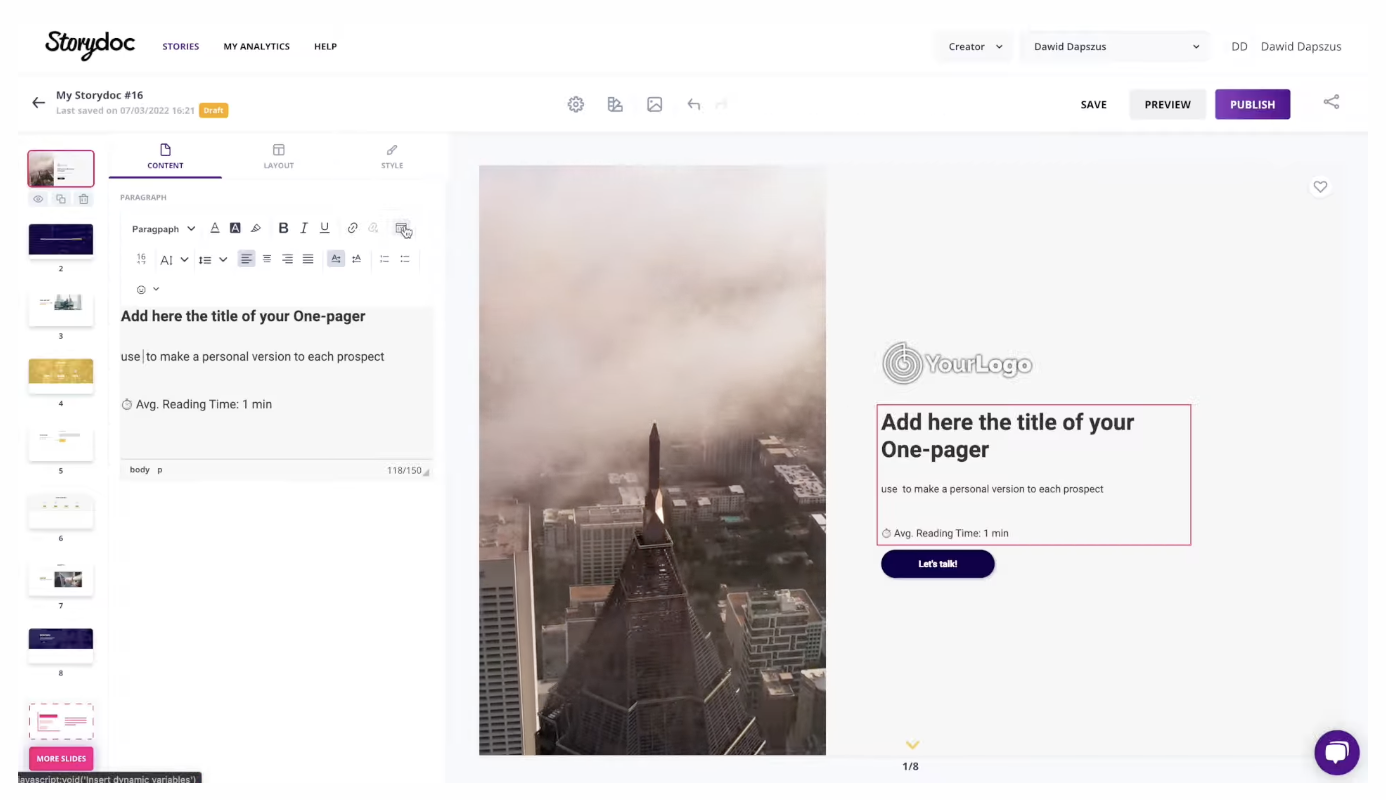
II. Relevance
This means your brand aligns with your target audience’s interests and needs. Research your market to understand your core audience and tailor your branding to reflect their preferences and the solutions they need.
III. Distinctiveness
This means having elements that set you apart from direct competitors. Identify what makes your business unique. Look for it in your product, service, or value, and emphasize this in your branding and marketing communications.
IV. Clarity
Clarity involves being straightforward with your brand’s core values, benefits, and promises. You can do this by developing clear and concise messaging that resonates with your audience and avoiding jargon.
Take this as an example:
This medical alert review brand, knowing that their target users are the elderly who either have poor eyesight or little to no knowledge about navigating the internet, made their reviews as clear and concise as possible. Above the fold, they only provided a few good options and created an overview of the most important information a user needs to know.
They didn’t bombard their audience with options and they didn’t fill each overview with so much information to get the user confused on what to look for and what to choose.
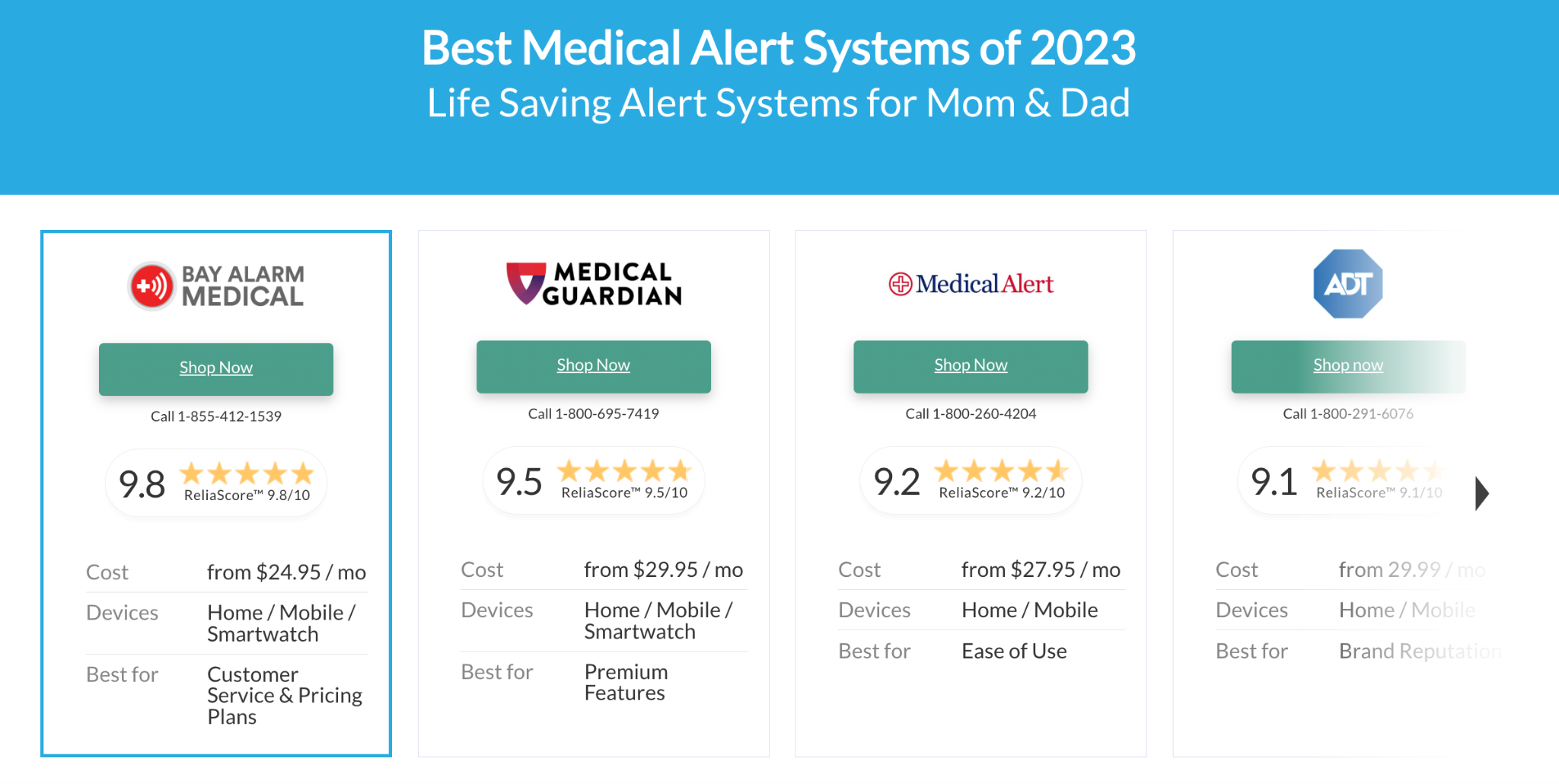
V. Memorability
A memorable brand leaves a lasting impression. Create memorable branding using catchy taglines, visually appealing designs, and engaging stories that stick in people’s minds.
VI. Authenticity
Authenticity is about being genuine and transparent. Showcase your brand’s values honestly, and ensure your actions align with what you claim to stand for.
Here’s how Transparent Labs, a fitness supplement provider did it. They don’t just claim to offer all-natural supplements, they lay out what each is made of. In their pre-workout guide, they also explained where each ingredient is from.
VII. Adaptability
This involves the capacity to evolve with market changes while maintaining your core identity. Stay updated on industry trends and be willing to update your branding while keeping the fundamental elements intact.
VIII. Engagement
This is about building a two-way relationship with your audience. Use social media, email marketing, and other platforms to interact with your audience, address their concerns, and gather feedback.
IX. Professionalism
Professionalism involves showcasing your brand in a way that cultivates trust and establishes credibility. Maintain a high level of quality in all customer interactions and handle issues and complaints responsibly and professionally.
X. Value-driven
This means clearly articulating the benefits your brand offers. Communicate the value and benefits of your products or services in all marketing materials and customer interactions.
XI. Emotional Connection
Creating an emotional connection involves resonating with the feelings and experiences of your audience. Share stories, company values, and messages that evoke emotions and build a deeper bond between your brand and your audience.
XII. Visibility
This means ensuring your brand is seen and heard in the marketplace. Employ effective marketing and advertising strategies to increase your brand’s presence both online and offline.
XIII. Competitive Awareness
Competitive awareness entails understanding your competition and strategically positioning your brand. Conduct regular competitive analyses to identify your standing in the market and find ways to differentiate your brand.
XIV. Innovativeness
This showcases a commitment to new ideas and improvements. Encourage a culture of creativity and innovation within your organization, and reflect this in your products, services, branding, and marketing strategies.
XV. Sustainability
Sustainability showcases a commitment to eco-friendly practices. If relevant, adopt sustainable practices in your operations and reflect this commitment in your branding and communications.
Conclusion
Think of your brand as more than just a cool logo or a catchy slogan. It’s about creating a compelling brand story that sticks, a name that people remember, and a promise that keeps them coming back. It’s your handshake with the world.
Now, think about this:
In a world filled with endless choices and flashy advertisements, how will it tell a story that matters? As you work on your brand, remember, it’s more than just a business task. It’s about creating something that lives in people’s hearts and minds.
Your brand could be something people talk about at dinner tables, something that solves a problem for them, or even something that makes their day a little brighter. So, what story will your brand tell?
Need revamp you app to implement the branding strategies you just learned? Head over to App Institute to create apps without needing to learn coding.
Author Bio
Burkhard Berger is the founder of Novum™. He helps innovative B2B companies implement revenue-driven SEO strategies to scale their organic traffic to 1,000,000+ visitors per month. Curious about what your true traffic potential is?
Author Picture: Here
Gravatar: [email protected]
Last Updated on March 25, 2025 by Ian Naylor

0 thoughts on “9 Reasons Why Branding Your Business Is Critical In 2024”